NCERT Solutions for Class 6 Geography - Globe - Latitudes and Longitudes
Q1. Answer the following questions briefly.
(a) What is the true shape of the Earth?
Ans: The Earth is not a perfect sphere. It is slightly flattened at the North and the South Poles and bulge in the middle.
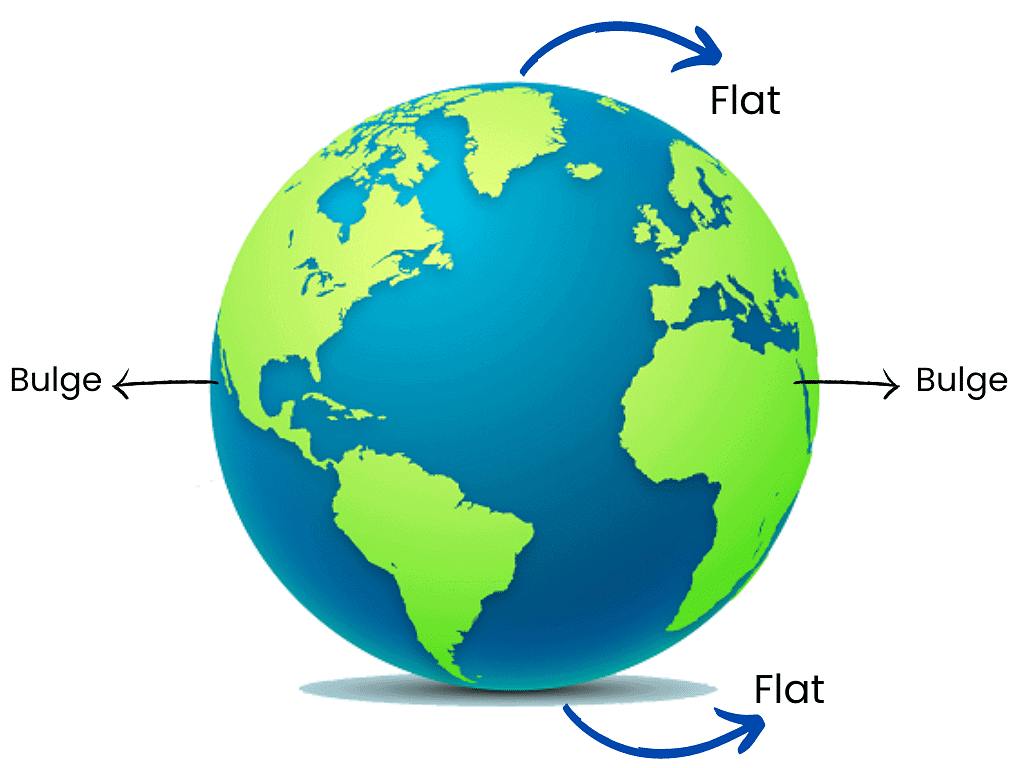 Shape of Earth
Shape of Earth
(b) What is a globe?
Ans: A globe is a spherical figure which is a miniature model of earth. It gives us a three-dimensional view of the whole Earth by showing distances, directions, areas, etc. Globes are available in a variety of sizes and types, like the terrestrial globe and the celestial globe.
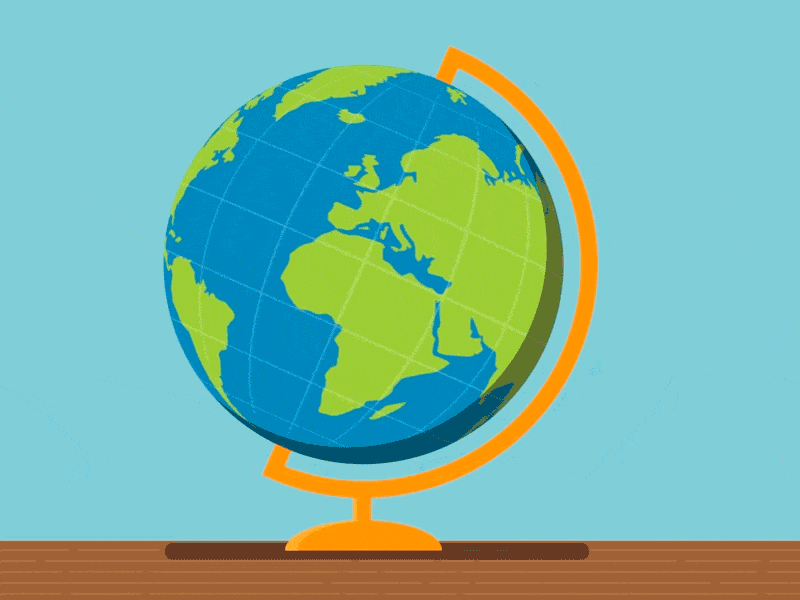 Globe
Globe
(c) What is the latitudinal value of the Tropic of Cancer?
Ans: The Tropic of Cancer lies at 23½º North of the Equator.
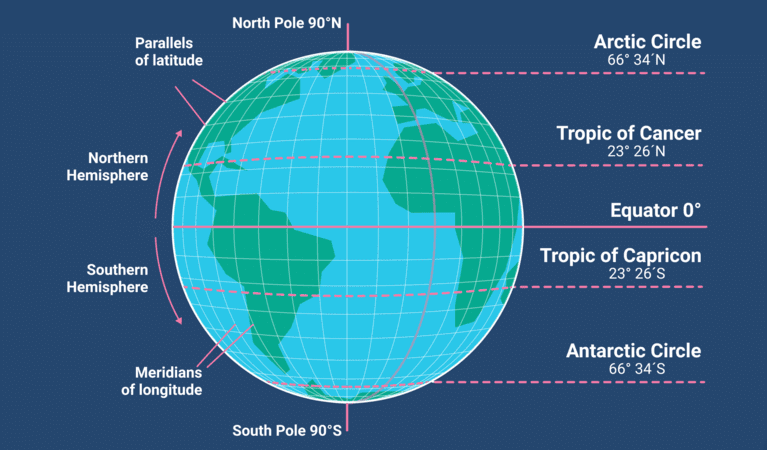 Tropic of Cancer
Tropic of Cancer
(d) What are the three heat zones of the Earth?
Ans: The three heat zones of the Earth are Torrid Zone, Temperate Zone and Frigid Zone.
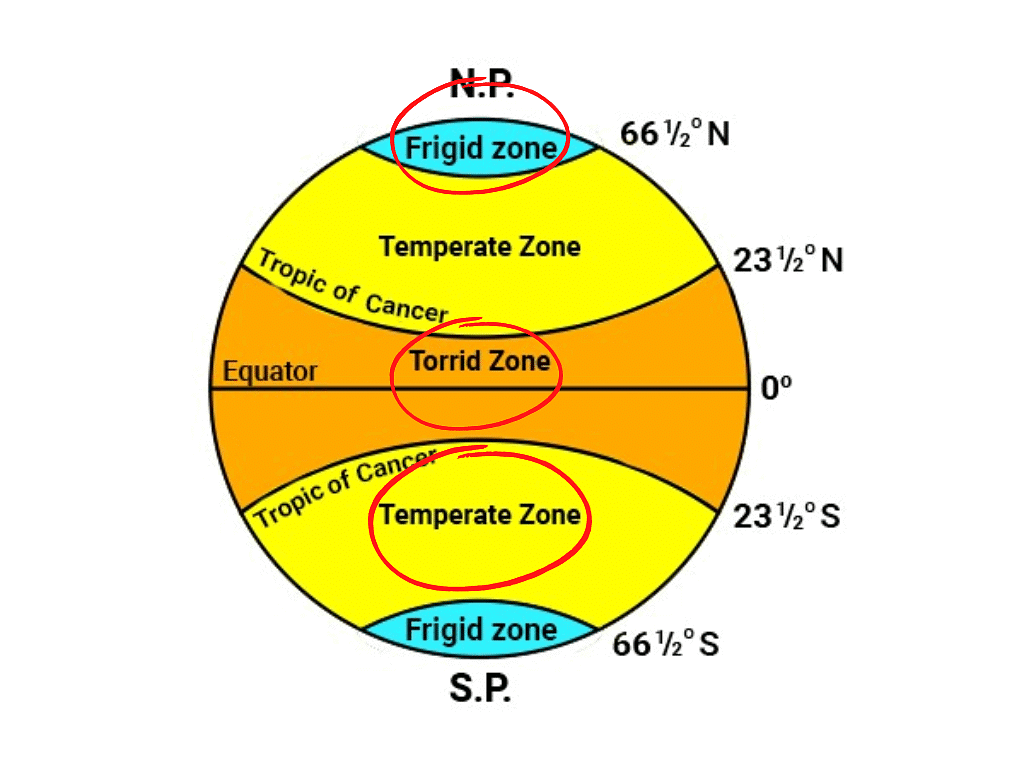 Heat Zones of Earth
Heat Zones of Earth
(e) What are parallels of latitude and meridians of longitude?
Ans: All imaginary parallel circles from the equator to the poles are called parallels of latitude. The imaginary set of semi-circle lines that run from the North Pole to the South Pole are called meridians of longitude.
 Latitudes & Longitudes
Latitudes & Longitudes
(f) Why does the Torrid zone receive maximum amount of heat?
Ans: The Sun shines perpendicular between the Tropic of Cancer and the Tropic of Capricorn throughout the year. Perpendicular sun rays give more heat than slanting sun rays. Therefore, the Torrid Zone receives the maximum amount of heat.
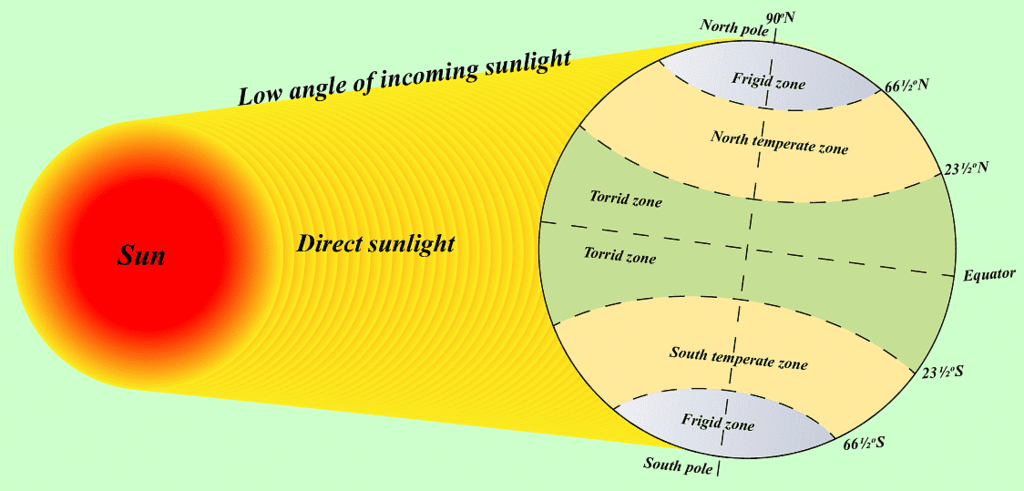 Torrid Zone
Torrid Zone
(g) Why is it 5.30 p.m. in India and 12.00 noon in London?
Ans:
- India and the United Kingdom are situated on different longitudes, which leads to a difference in their local times. The Earth rotates 360 degrees in 24 hours, which means it covers 1 degree of longitude in 4 minutes. Therefore, every degree of longitude corresponds to a 4-minute difference in time.
- London is located at 0° longitude, while the standard meridian of India is 82°30' E longitude. This difference in longitude results in a time difference between the two locations. Since India is to the east of London, time in India is ahead. For every degree eastward, time increases by 4 minutes.
- Calculating for the 82°30' E longitude, the time difference between London and India is:
82.5 degrees x 4 minutes per degree = 330 minutes or 5 hours and 30 minutes. - So, when it is 12 noon in London, it is 5:30 PM in India.
Q2. Choose the correct answers.
(a) The Value of the Prime Meridian Is
(i) 90 °
(ii) 0°
(iii) 60°
Ans: (ii) 0°
 View Answer
View AnswerThe Prime Meridian is the reference line for measuring longitude, and its value is 0°
(b) The Frigid Zone Lies Near
(i) The Poles
(ii) The Equator
(iii) The Tropic of Cancer
Ans: (i) The Poles
 View Answer
View AnswerThe Frigid Zone is located near the poles, where the sun’s rays are slanting, resulting in very cold temperatures.
(c) The Total Number of Longitudes are
(i) 360
(ii) 180
(iii) 90
Ans: (ii) 180
 View Answer
View AnswerLongitudes are semicircles that meet at the poles, and there are 180 degrees of longitude east and 180 degrees west of the Prime Meridian.
(d) The Antarctic Circle is Located in
(i) The Northern hemisphere
(ii) The Southern hemisphere
(iii) The Eastern hemisphere
Ans: (ii) The Southern hemisphere
 View Answer
View AnswerThe Antarctic Circle is situated in the Southern Hemisphere, at 66½° south of the equator.
(e) Grid is a Network of
(i) Parallels of latitudes and Meridians of longitudes
(ii) The Tropic of Cancer and The Tropic of Capricorn
(iii) The North Pole and the South Pole
Ans: (i) Parallels of latitudes and Meridians of longitudes
 View Answer
View AnswerA grid is formed by the intersection of parallels of latitude and meridians of longitude, helping in the precise location of places on the globe.
Q3. Fill in the blanks.
(a) The Tropic of Capricorn is located at _____.
Ans: 23.5 Degrees south of the Equator
 View Answer
View Answer- The Tropic of Capricorn is an important latitude line situated at 23.5° south.
- It marks the southernmost point where the Sun can be directly overhead, which happens during the December solstice.
(b) The Standard Meridian of India is _____.
Ans: 82½ Degrees E
 View Answer
View Answer- India's standard time is based on the longitude of 82.5° E, known as the Standard Meridian of India.
- This line of longitude was chosen to have a single time zone for the whole country and is 5 hours and 30 minutes ahead of GMT (Greenwich Mean Time).
(c) The 0° Meridian is also known as _____.
Ans: Prime Meridian
 View Answer
View Answer- The Prime Meridian is the starting point for measuring longitude and is set at 0°.
- It runs through Greenwich, London, and divides the Earth into the Eastern and Western Hemispheres.
(d) The distance between the longitudes decreases towards _____.
Ans: Poles
 View Answer
View Answer- Longitude lines, which run from the North Pole to the South Pole, are widest at the Equator.
- As they approach the poles, these lines converge, reducing the distance between them.
(e) The Arctic Circle is located in the _____ hemisphere.
Ans: Northern
 View Answer
View Answer- The Arctic Circle is an imaginary line located at approximately 66.5° north of the Equator, within the Northern Hemisphere.
- It marks the region where, for at least one day each year, there is continuous daylight or darkness.
|
69 videos|386 docs|80 tests
|
FAQs on NCERT Solutions for Class 6 Geography - Globe - Latitudes and Longitudes
| 1. Globe पर अक्षांश और देशांतर क्या होते हैं? |  |
| 2. अक्षांश और देशांतर का महत्व क्या है? |  |
| 3. अक्षांश रेखाएं किस दिशा में फैली होती हैं? |  |
| 4. देशांतर रेखाएं कैसे होती हैं? |  |
| 5. Globe पर अक्षांश और देशांतर को कैसे समझा जा सकता है? |  |



















